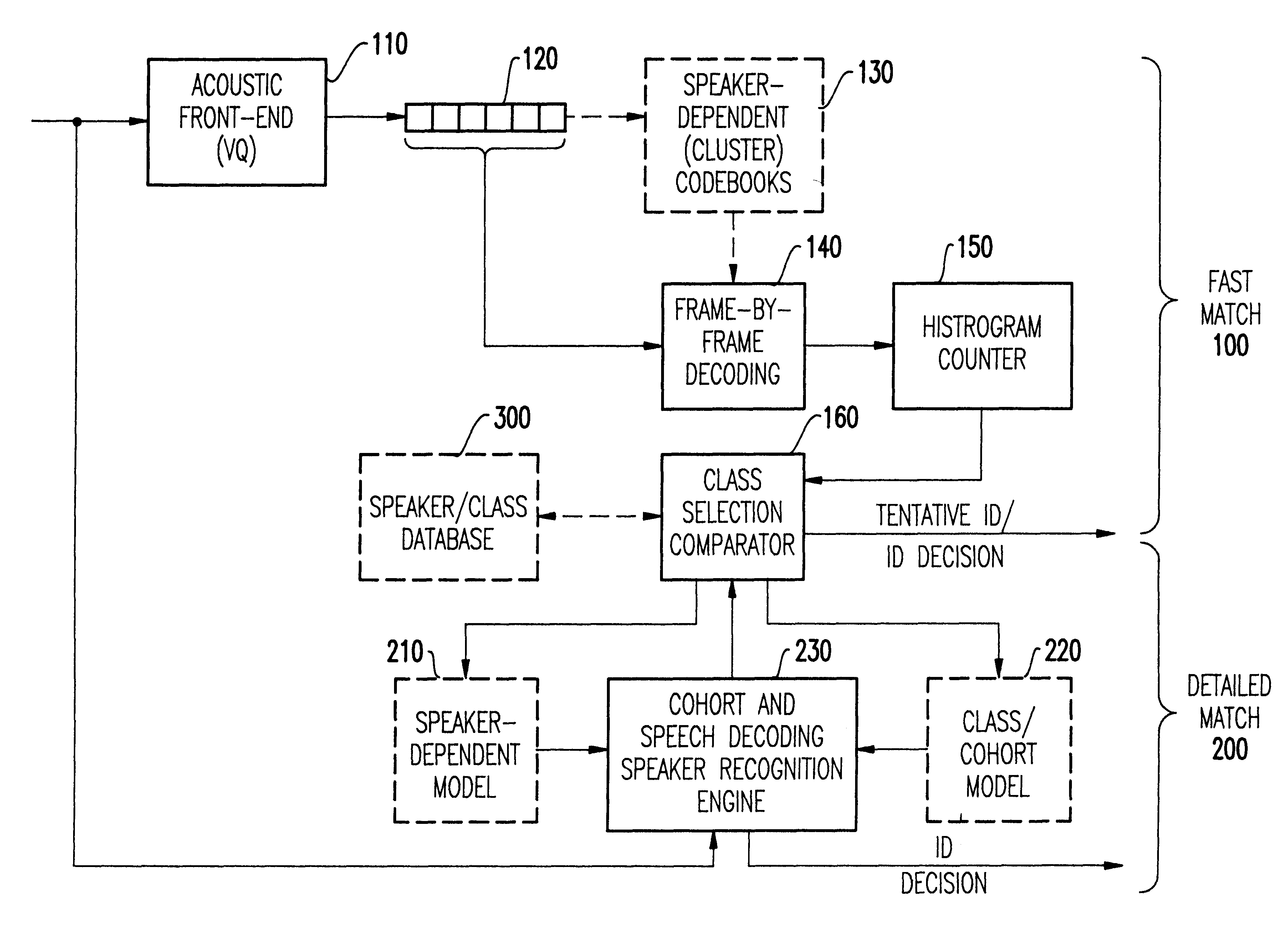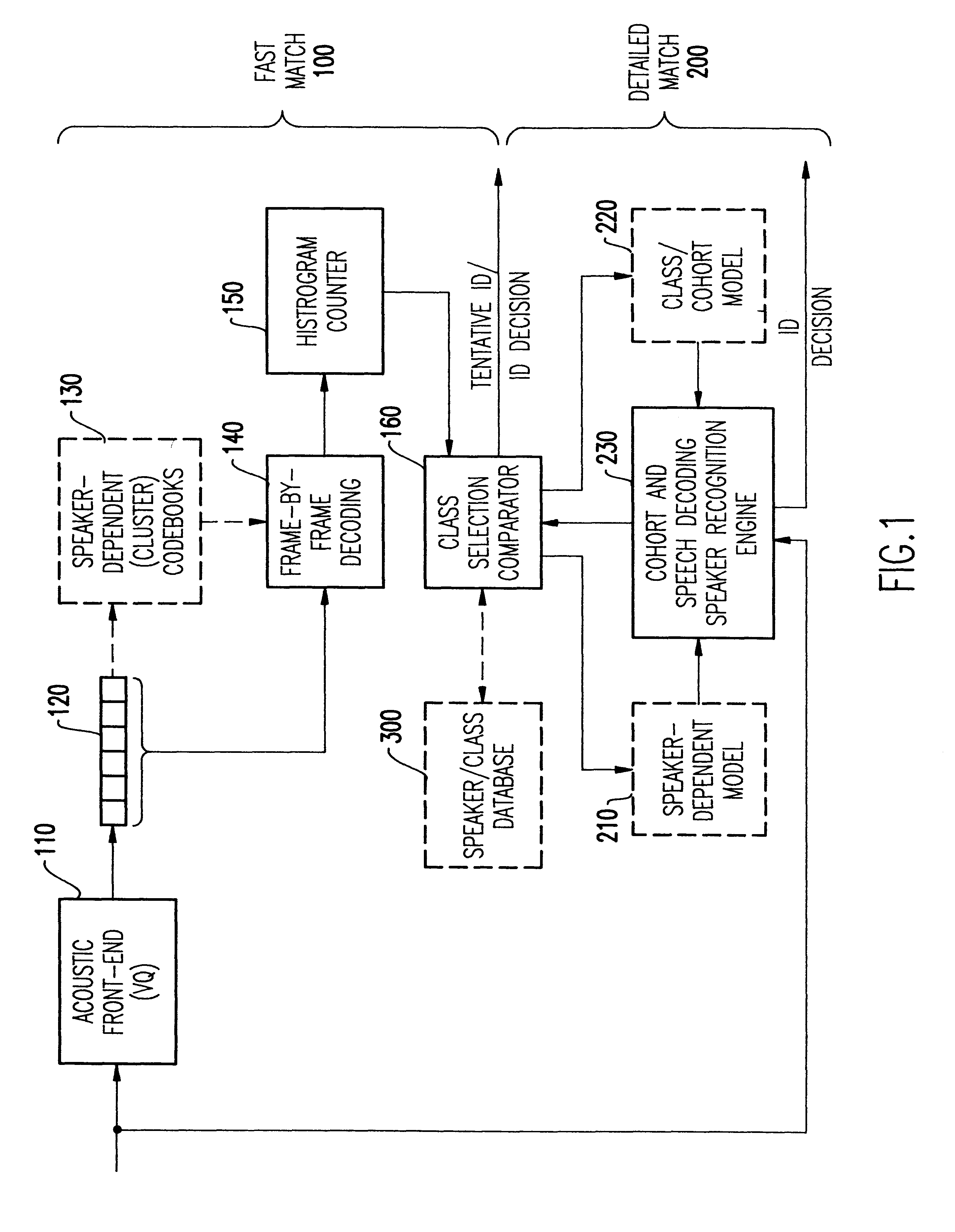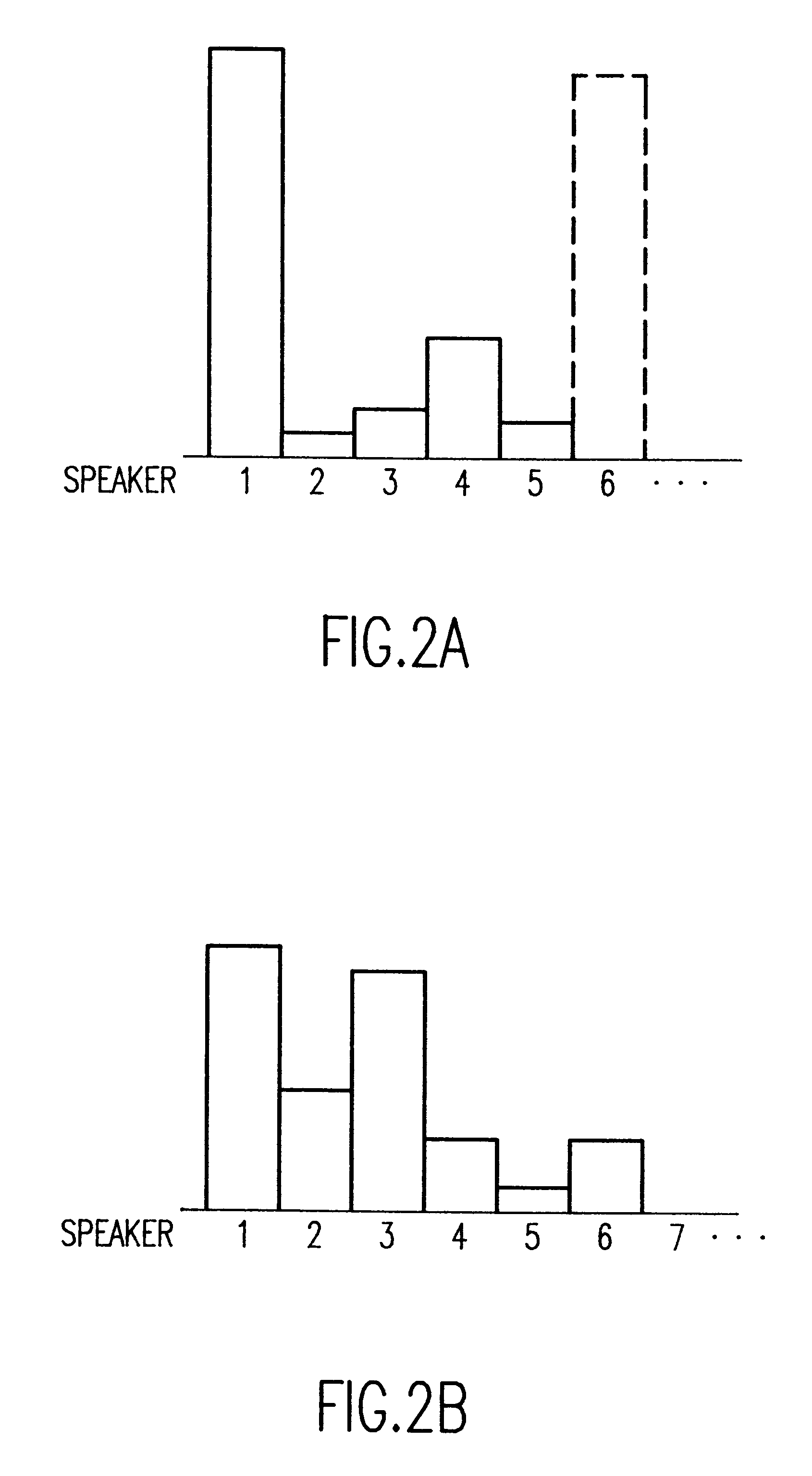However, keyboards of any type have inherent disadvantages.
Additionally, numerous keystrokes may be required (e.g. to specify an operation, enter a security code,
personal identification number (PIN), etc.) which slows operation and increases the possibility that erroneous actuation may occur.
Therefore, use of a keyboard or other manually manipulated input structure requires action which is not optimally natural or expeditious for the user.
However, large systems including large resources are likely to have a large number of potential users and thus require massive amounts of storage and
processing overhead to recognize speakers when the
population of enrolled speakers becomes large.
Performance of most speaker-dependent (e.g. performing decoding of the
utterance and aligning on the decoded script models such as hidden Markov models (HMM) adapted to the different speakers, the models presenting the highest likelihood of correct decoding identifying the speaker, and which may be text-dependent or text-independent) systems also degrades over large speaker populations but the tendency toward saturation and performance degradation is encountered over smaller populations with fast, simple systems which discriminate between speakers based on smaller amounts of information and thus tend to return ambiguous results when data for larger populations results in smaller differences between instances of data.
However, the numbers of speaker classes and the number of speakers in each class that can be handled with practical amounts of
processing overhead in acceptable response times is limited.
(In other words, while frame-by-frame classifiers require relatively small amounts of data for each enrolled speaker and less
processing time for limited numbers of speakers, their discrimination power is correspondingly limited and becomes severely compromised as the distinctiveness of the speaker models (each containing relatively less information than in speaker-dependent systems) is reduced by increasing numbers of models.
It can be readily understood that any approach which seeks to reduce information (stored and / or processed) concerning speaker utterances may compromise the ability of the
system to discriminate individual enrolled users as the
population of users becomes large.
On the other hand, more complex systems which use speaker
dependent model-based decoders which are adapted to individual speakers to provide speaker recognition must run the models in parallel or sequentially to accomplish speaker recognition and therefore are extremely slow and require large amounts of memory and
processor time.
Additionally, such models are difficult to
train and adapt since they typically require a large amount of data to form the model.
However, such arrangements, by their nature, cannot be made transparent to the user; requiring a relatively lengthy enrollment and initial recognition (e.g. logon) procedure and more or less periodic interruption of use of the
system for
verification.
Cohort models allow the introduction of
confidence measures based on competing likelihoods of speaker identity and are very difficult to build correctly, especially in increasing populations due to the number of similarities which may exist between utterances of different speakers as the population of enrolled speakers increases.
For that reason, cohort models can be significant sources of potential error.
Enrollment of new speakers is also complicated since it requires extraction of new cohorts and the development or modification of corresponding cohort models.
Template matching, in particular, does not allow the straightforward introduction of cohorts.
Templates are usually the original waveforms of user utterances used for enrollment and the number of templates for each
utterance is limited, as a practical matter, by the time which can reasonably be made available for the matching process.
On the other hand, coverage of intra-speaker variations is limited by the number of templates which may be acquired or used for each
utterance to be recognized and acceptable levels of coverage of intra-speaker variations becomes prohibitive as the user population becomes large.
Development of cohorts, particularly to reduce data or simplify search strategies tends to
mask intra-speaker variation while being complicated thereby.
Further,
template matching becomes less discriminating as the user population increases since the definition of distance measures between templates becomes more critical and complicates search strategies.
Accordingly, at the present state of the art, large speaker populations render text-independent, fast speaker recognition systems less suitable for use and, at some size of speaker population, render them ineffective, requiring slower, storage and processor intensive systems to be employed while degrading their performance as well.
There has been no system available which allows maintaining of performance of speaker recognition comparable to fast, simple systems or increasing their discrimination power while limiting computational and memory requirements and avoiding saturation as the enrolled speaker population becomes large.
 Login to View More
Login to View More  Login to View More
Login to View More 


